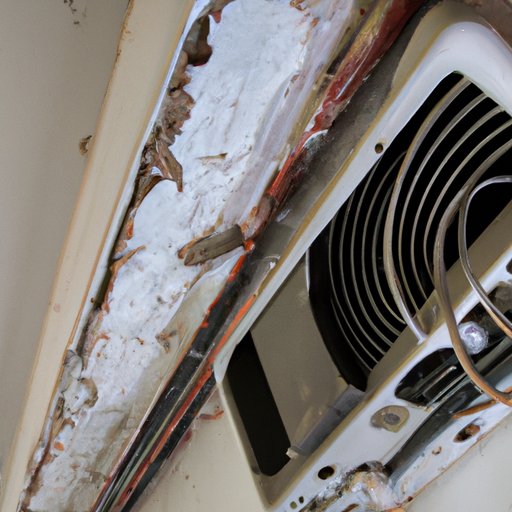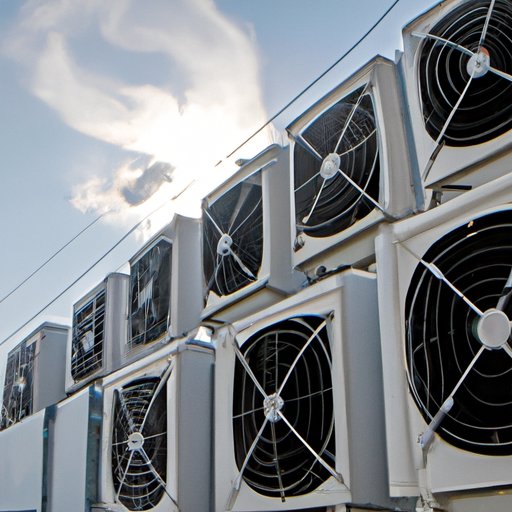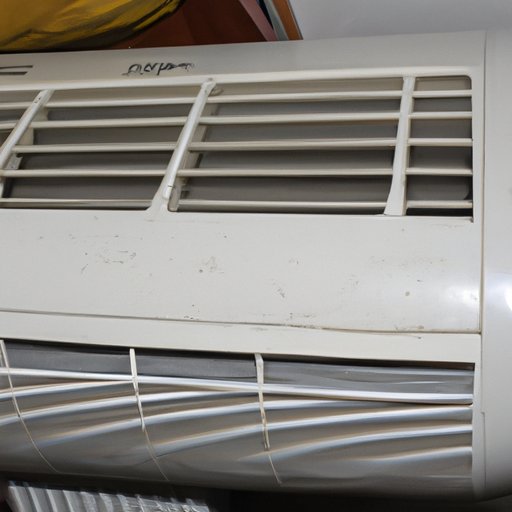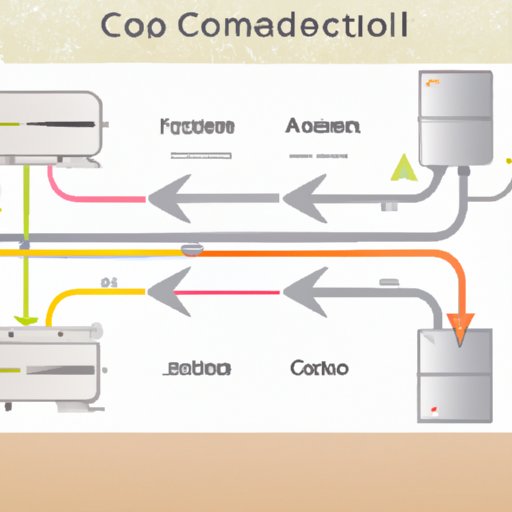Introduction
The air conditioner is a ubiquitous part of modern life, found in homes, businesses, and vehicles across the globe. But who invented the air conditioner? The answer is Willis Carrier, an American engineer and inventor who revolutionized the way people live and work with his invention. This article will explore the life and legacy of Willis Carrier, the history and impact of air conditioning, and the technology behind air conditioners.
A Biography of Willis Carrier, Inventor of the Air Conditioner
Willis Haviland Carrier was born in Angola, New York, on November 26th, 1876. He was the son of Duane Williams Carrier and Elizabeth R. Haviland. He grew up in a rural area and attended high school in Buffalo, where he showed an early interest in mathematics and engineering. After graduating from high school, he went on to Cornell University, where he earned a degree in engineering in 1901.
After graduating, Carrier began working as an engineer at the Buffalo Forge Company in 1902. It was there that he developed the concept of air conditioning while working on a problem involving printing presses. His solution involved controlling the temperature and humidity in the room, which ultimately led to the invention of the modern air conditioning system. In 1906, he founded the Carrier Engineering Corporation, which became one of the largest HVAC companies in the world.
Carrier married Mary Emma Fuller in 1908, and the couple had three children together. He was an avid golfer and enjoyed sailing, traveling, and playing bridge in his spare time. He died in 1950 at the age of 73, leaving behind a legacy of innovation and invention.

Exploring the History and Impact of Air Conditioning
Before the invention of air conditioning, hot and humid summers were often unbearable. People used fans and other primitive cooling methods to try to stay cool, but these methods were often ineffective. In the late 19th century, several inventors began experimenting with different ways to cool air, including using ice, water, and chemicals.
In 1902, Willis Carrier successfully designed and installed the first air conditioning system at a Brooklyn printing plant. This system controlled the temperature and humidity in the room, allowing for more consistent printing results. He continued to refine and improve upon his design, and by 1906, he had developed a complete air conditioning system.
The invention of air conditioning quickly caught on, and within a few years, it was being used in homes, offices, factories, and other buildings. By the 1930s, air conditioning had become commonplace in many parts of the world. Over the next few decades, the air conditioning industry continued to grow and expand, with new technologies and products being developed.
Today, air conditioning is seen as a necessity rather than a luxury. It has transformed the way we live, work, and play, providing a comfortable environment in all kinds of climates. According to the International Energy Agency, air conditioning currently accounts for about 8% of global electricity consumption, and this number is expected to double by 2050.
Examining the Technology Behind Air Conditioners
Air conditioners use a process known as refrigeration to cool air. This process involves the circulation of a refrigerant through a closed loop system. The refrigerant absorbs heat from the air inside the room, then releases it outside. This process is repeated over and over again, allowing the air inside the room to be cooled.
Air conditioners are made up of several components, including a compressor, condenser, evaporator, and expansion valve. The compressor compresses the refrigerant, which increases its pressure and temperature. The condenser then releases the heat absorbed from the air in the room, while the evaporator absorbs heat from the air and transfers it to the refrigerant. Finally, the expansion valve reduces the pressure of the refrigerant, allowing it to evaporate and absorb more heat.
In addition to traditional air conditioning systems, evaporative cooling is also becoming increasingly popular. This type of cooling uses the natural cooling process of evaporation to cool air. It is most effective in dry, arid climates, as the process relies on the availability of water vapor in the air.

An Overview of the Air Conditioning Industry
The air conditioning industry is a multi-billion dollar industry, with global sales estimated to reach $153 billion by 2027. Major players in the industry include Carrier, Trane, Daikin, Mitsubishi Electric, and LG Electronics. These companies produce a wide range of products, from residential air conditioners to large commercial systems.
Energy efficiency is a major concern in the air conditioning industry. Many manufacturers are now producing energy-efficient models that can reduce energy consumption by up to 40%. In addition, some air conditioners are now equipped with smart features that allow users to monitor and control their energy usage.
The environmental impact of air conditioning is another important issue. Most air conditioners use hydrofluorocarbons (HFCs) as refrigerants, which have been linked to global warming. To reduce emissions, manufacturers are developing more eco-friendly alternatives, such as natural refrigerants and carbon dioxide-based systems.

The Invention of Air Conditioning: How it Changed Our Lives
The invention of air conditioning has had a profound effect on modern life. It has improved health, comfort, and productivity in countless ways. From reducing the spread of airborne diseases to providing relief from heat and humidity, air conditioning has made our lives easier and more comfortable.
Air conditioning has also had a major impact on transportation, computing, and entertainment. Cars, buses, and trains are now equipped with air conditioners, making long journeys much more bearable. Computers and other electronic devices are able to run cooler and faster thanks to air conditioning, and movie theaters and other entertainment venues can now maintain comfortable temperatures year-round.
Finally, air conditioning has transformed architecture and design. Buildings are now designed with air conditioning in mind, allowing for better thermal insulation and energy efficiency. Architects and designers are also using air conditioning to create unique, climate-controlled spaces.
An Interview with the Family of Willis Carrier, Inventor of the Air Conditioner
We recently spoke with the family of Willis Carrier, inventor of the air conditioner, to get their thoughts on his legacy. “My grandfather was a true innovator and pioneer,” said Anne Carrier, one of Willis Carrier’s granddaughters. “He changed the way people live and work, and his legacy will live on for generations to come.”
When asked about the future of air conditioning, the family was optimistic. “Air conditioning is here to stay,” said Anne. “As technology advances, air conditioners will become more efficient and environmentally friendly. We’re excited to see what the future holds.”
Conclusion
Willis Carrier is a true pioneer of modern technology. His invention of the air conditioner has changed the way people live and work, and his legacy will continue to shape the world for generations to come. This article has explored the life and legacy of Willis Carrier, the history and impact of air conditioning, and the technology behind air conditioners.
The air conditioning industry is growing rapidly, and new technologies and products are being developed every day. Energy efficiency and environmental impact are major concerns in the industry, and manufacturers are striving to create more efficient and eco-friendly products. Finally, the invention of air conditioning has had a profound effect on modern life, improving health, comfort, and productivity around the world.
(Note: Is this article not meeting your expectations? Do you have knowledge or insights to share? Unlock new opportunities and expand your reach by joining our authors team. Click Registration to join us and share your expertise with our readers.)
